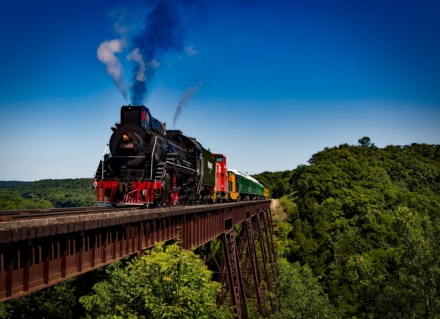
The taxation of Railroad Retirement Benefits can seem confusing to the uninitiated. Let’s look at what these terms mean, and how these benefits are taxed.
Railroad Retirement Benefits
First let’s define what we mean by “Railroad Retirement Benefits.” RRB are a form of retirement income for people employed by railroads in the United States.
(This is, of course, an oversimplification.)
The Railroad Retirement Board administers the benefits program. The Wikipedia page about the Board gives a good explanation of the history of the Board, a history of the benefits, and how the benefits are calculated and managed.
Tier I Benefits
Employees of the railroad pay into the RRB fund, in lieu of FICA taxes.
This means, someone working for the railroad DOES NOT PAY FICA TAXES. Instead, they pay into the RRB fund. If someone works their entire life for the railroad and never has another employer, they won’t get a Social Security benefit because they never paid FICA taxes. Instead, they’ll get an RRB benefit.
Tier I benefits are RRB benefits that are equivalent to Social Security benefits and are taxed the exact same way as Social Security benefits.
A person receiving Tier I benefits will receive a Form RRB-1099. These benefits are reported on the Social Security line of the person’s tax return, and the taxable portion is determined in the exact same manner as regular Social Security benefits.
Tier II Benefits
Railroad employees typically also receive “Tier II” benefits. These benefits represent the person’s payments into the RRB fund above the Tier I/FICA-equivalent amount.
When a person receives Tier II benefits, they’ll get a Form RRB-1099-R. These benefits are taxed in the same manner as other pensions or retirement account withdrawals.
For more tax terms explained in simplified terms, visit the Glossary page on this site.

